Religious tourism has a long history in Croatia, since the custom of pilgrimages and visits to sacred sites goes back millennia. In going on a pilgrimage, people fulfil deep personal and spiritual needs, or perhaps make votive offerings when seeking help with problems in life, such as with their health or that of their loved ones. As Croatian holy places become more visited in tandem with the growth of tourism in general, more facilities are developing to support these place of worship, such as better accommodation facilities or related cultural activities.
As you probably know by now, Croatia is a predominantly Catholic country, and for that reason the Virgin Mary is the most venerated of all the saints here. The most significant saint’s day is the Feast of the Assumption of Mary on August 15, which is known here as “Velika Gospa”, which translates roughly as “The Great Lady”. This is a public holiday in Croatia, and if your visit to a Marian shrine coincides with this day you’ll find it is marked in fine style, and is very very busy.
If you would like to take part in a pilgrimage your best bet is to contact directly the shrine you are interested in to find out the timetable for pilgrimages. Alternatively, you can go through a travel agency that arranges religious tours, such as www.nb-maestral.hr or www.mihael-putovanja.hr. You might also see announcements about pilgrimages on the notice boards in churches across the country.
The most famous Marian shrines in Croatia are:
The Shrine of the Mother of God of Bistrica is in the town of Marija Bistrica in the region of Zagorje, some 40km north of Zagreb. The pilgrimage season here lasts from the first Sunday after Easter until the end of October. During this time, about 50 pilgrimages take place. Here, a black wooden statue of the Mother of God that is said to have miraculous powers is venerated. This tradition goes back to the end of the 15th century. The statue was originally kept in a chapel on a hill called Vinski vrh, and was hidden many times when the area was threatened by invading armies. The statue was forgotten about, and in 1684 reminded the locals of its presence by emitting a strange light. It was placed on the altar of this church and the site was proclaimed a national place of pilgrimage in 1715. Pope John II visited Marija Bistrica in 1998. The pilgrimage calendar is available on www.svetiste-mbb.hr.
The Shrine of the Mother of God of Trsat in Rijeka is a place where many sailors and pilgrims come every day to pray before a miraculous painting of the Mother of God with the name “the Merciful Mother”. The painting was sent to Trsat, which is sited on a cliff top overlooking the port city of Rijeka, by Pope Urban 5 in 1367. Pilgrimages take place all through the year, with the most important days being the annual celebrations of the Mother of God of Trsat on 10 May, the Nativity of the Blessed Virgin Mary on 8 September, and the Feast of the Assumption on 15 August, when a traditional fair takes place. To take part in a weekend pilgrimage, you can call the Franciscan Monastery on Trsat which is at Frankopanski trg 12, Rijeka, tel. (385-51) 45 29 00, www.trsat-svetiste.com.
The Shrine of the Mother of God of Kamenita vrata (the “Stone Gate”), the patron saint of the city of Zagreb, is a place where people go to pray before a picture of the Virgin Mary which survived a great fire in 1761. The most important day here is the day when Zagreb remembers its patron saint and holds its annual town celebrations, 31 May.
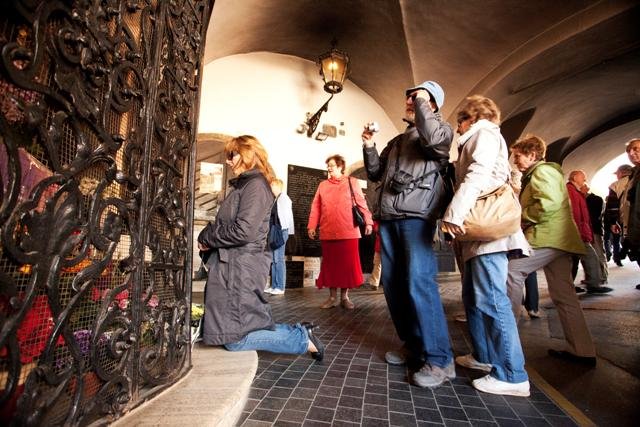
Photo by Marko Vrdoljak - TZGZ Archives
The Shrine of Our Lady of Tears is in Pleternica in eastern Croatia. In 2005, 50 years after veneration of Our Lady of Tears of Pleternica began, the parish was declared a place of pilgrimage. On this occasion, the Archbishop of Syracuse brought part of a relic of Our Lady of Syracuse as a gift to the parish. Every year at the end of August a nine day series of prayers called “devetnice” is held in honour of Our Lady of Tears.
The Shrine of Our Lady of Sinj - in the town of Sinj, a miraculous painting of Our Lady is venerated, which is known as “The Mother of Mercy”. It was brought here from the inland region around the Cetina river when the inhabitants fled in the face of Turkish incursion. The people found shelter in the fortress at Sinj and prayed before the painting. The Turks, who were attempting to seize the fortress, saw the image of an illuminated female figure the night before the Feast of the Assumption, and fled. Since then Sinj has been a place of pilgrimage and the Mother of Mercy, or “Our Lady of Sinj”, is venerated with great celebrations on the Feast of the Assumption. For an organized pilgrimage please contact the Shrine of Our Miraculous Lady of Sinj, Fratarski prolaz 4, Sinj, tel.(+385-21) 70 70 10, tel./fax (+385-21) 82 31 00 e-mail: franjevacki.samostan.sinj1@st.t-com.hr, www.gospa-sinjska.hr.
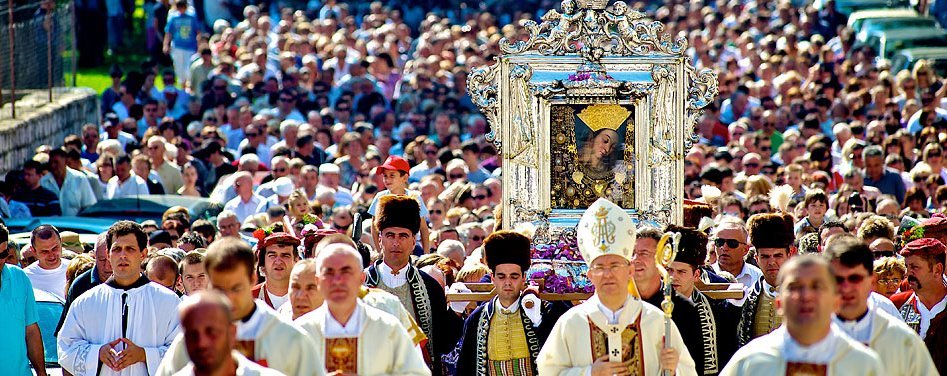
Photo by Branko Čović
The Shrine of the Mother of God of Krasno is in Krasno, a lovely old village in the Velebit mountains. There has been a church dedicated to the Virgin Mary here since the 13th century. According to legend, local shepherds found a beautiful flower bearing the image of Mary in the forest nearby. They picked it and took it to the village, but the flower disappeared and reappeared in its original place, on a log in the forest. They tried again and again, but the flower always went back. It was decided that a church should be built on that spot. The central celebrations here are also on the Feast of the Assumption, but pilgrims can come at any time. The Krasno Shrine, Krasno, tel.(+385-53) 85 10 07, mob. (+385-) 098 49 23 06.
The Shrine of Our Lady of Sanctuary in Aljmaš, a village on the banks of the Danube in eastern Croatia, was founded in 1704 when Jesuits from the nearby settlement of Lug who had fled when Calvinists took over their church sought refuge in the simple church at Aljmaš for a statue of Our Lady. Both the statue and the church at Aljmaš were destroyed several times by natural disasters or by war. The last time the church was rebuilt was following the Croatian War of Independence, and in 1998 the statue was returned once again to the newly rebuilt shrine at Aljmaš. Pope John Paul II, during his third visit to Croatia in 2003, crowned the statue of Our Lady of Aljmaš with a small golden crown. This is today a busy sanctuary, celebrating the Feasts of the Assumption, the Nativity, and the Holy Name of Mary (September 12). Pilgrims are welcome to visit at any time, but it’s best to call in advance. For information and bookings please call the Aljmaš Parish Offices and ask for Sanctuary Manager Ante Markić. Tel/fax.(+385-31) 59 50 00, www.svetiste-aljmas.hr, zupni.ured.aljmas@os.t-com.hr.
The Shrine of the Mother of God of Lourdes at Veprić near the coastal resort of Makarska, south of Split, was founded in 1908 by Bishop Juraj Carić (1867-1921) on the 50th anniversary of the apparition of the Virgin Mary at Lourdes, where she appeared 18 times to the young girl Bernardette Soubirous. At Veprić there is a chapel with a sacristy, an altar on the square, confessionals, Stations of the Cross, a processional route and a building for religious study. Due to the site’s beautiful natural surroundings and its peaceful environment, the shrine is very popular all year round. The most pilgrimages are held on 11 February, 25 March, 15 August, and 7-8 September. See www.vepric.net. The Shrine of the Mother of God of Lourdes, Veprić, Makarska, tel./fax: (+385-21) 61 63 36, e-mail: svetiste-vepric@st.htnet.hr.
The Karlovac area gained a place of pilgrimage in 1987 with the opening of the Shrine of St Joseph at Dubovac. The shrine is located below an old fortress on a hilltop overlooking the city of Karlovac. This is the most important shrine consecrated to St Joseph in the country: St Joseph was proclaimed patron saint of Croatia in 1687. The main day of pilgrimage is, of course, St Joseph’s Day, 19 March. Pilgrimages also take place on other saints days related to St Joseph, and indeed at any time (please call to arrange in advance). The Shrine of St Joseph, Boškovićeva 36, Karlovac, tel./fax (+385-47) 41 70 31, tel./fax: (+385-47) 41 36 49.
The Shrine of the Precious Blood of Jesus at Ludbreg rests on the foundations of its predecessor, which was founded in 1411 when a priest saying the transubstantiation during Mass noticed blood in the chalice. This blood is still kept today in a reliquary in the parish church. Pilgrimages take place all year round, while the main pilgrimage is on the first Sunday in September. Ludbreg is a pleasant small town around 85 km northeast of Zagreb, close to the baroque city of Varaždin, www.svetiste-ludbreg.hr.
Zagreb
If you’d like to visit sites in Zagreb with religious significance, Kamenita vrata (“the Stone Gate”), the Cathedral and the Museum of the Blessed Alojzije Stepinac will probably be top of your list. If you have the time to explore the religious aspects of Croatia’s cultural heritage a bit further, you should also visit St Francis’ Church on Kaptol, where you can enjoy the famous stained glass windows by Croatian artist Ivo Dulčić, whose work was so groundbreaking that it sometimes incurred the wrath of the church authorities of the time. The windows, which he made in 1960, depict scenes from St Francis’ song “Canticle of the Sun”.
Also, don’t miss the chance to see the south portal of St Mark’s Church in Gornji grad (Zagreb’s “Upper Town”), which dates back to the 15th century and depicts the saints in stone and wood. In the church’s interior you can also see typically powerful works by the great Croatian sculptor Ivan Meštrović. The Mimara Museum, the Museum of Arts and Crafts, the Ethnographic Museum and the Museum of the City of Zagreb also have valuable collections of sacred art.
If you are in Zagreb for August 15, you might like to witness the celebrations of the Feast of the Assumption in one of the Marian churches. You’ll find it’s a lively occasion, with a great many people attending a special Mass and enjoying picturesque fairs with food, drink and music.
To witness this, try the churches in the Zagreb neighbourhoods of Remete or Stenjevec, or in the following places in the Zagreb region: the Church of the Mother of God of Dol (Dol, near Krašić); the Church of the Assumption of the Blessed Virgin Mary in Kloštar Ivanić, Kupinec (near Klinča Sela), Pokupsko, Nart Savski (near Rugvica), the Chapel of the Blessed Virgin Mary of the Snows in Volavje (Jastrebarsko) and the Church of the Visitation of the Blessed Virgin Mary in Vukovina (near Velika Gorica).
You can also join the people of Zagreb on traditional two-day votive pilgrimages to Marija Bistrica on the second weekend of September.
If you are interested in buying a religious book, prayer book, gift or souvenir, head for Kaptol. On the street that leads north from the Cathedral you’ll find a number of specialist shops selling books and other items on religious themes.
The Mother of God of Kamenita vrata became the patron saint of the City of Zagreb in 1991 on 31 May, the city’s annual celebration day, in the year when this was also the 260th anniversary of the shrine at Kamenita vrata. Kamenita vrata, or “the Stone Gate”, is the only one of four city gates that still survives from the days of the fortified lay settlement of Gradec. This became a special place and a shrine after a great fire in 1731 consumed everything leaving the portrait of Our Lady untouched amidst a pile of ashes. Since then, the portrait has been kept on an altar in a tiny chapel inside the gate, protected by an ornate grille. Many city folk come here to pray and light candles, to seek help, comfort and hope. The atmosphere in the little passages is very special, with the soft light brightening walls blackened by centuries of smoke from the candles. On the saint’s day of the Mother of God of Kamenita vrata, which takes place on 31 May each year, following a special Mass in the Cathedral a procession passes along Bakačeva ulica, across the city square and up Radićeva ulica to the shrine, carrying the portrait of Our Lady, and ending with prayers.
Zagreb Cathedral
Zagreb’s Cathedral is one of the symbols of the city, decorating many a postcard and souvenir with its unusual twin towers. It is the largest religious building in Croatia, and is dedicated to the Assumption of the Blessed Virgin Mary and also to St Stephen the King. The Cathedral was built in stages from the 13th to the 16th centuries, and damaged many times by disasters such as earthquakes and fires. The most recent reconstruction of the Cathedral began in the 1980s and work on restoring the Cathedral’s exterior is still underway. In 1997, the grave of Cardinal Alojzije Stepinac, an important national and religious figure, was rebuilt to include pictures showing key moments in his life. Pope John II prayed at the grave during his visits on two occasions, since Stepinac is a much loved and respected figure from Croatian history.
The Cathedral’s Organ dates from 1855 and is a listed monument of cultural heritage of the highest order.
The Treasury of Zagreb Cathedral contains a wealth of cultural treasures collected over eight centuries. It mainly consists of gold and silverware, as well as ecclesiastical robes, liturgical texts, instruments, documents, plans and medals. Since the collection was successfully protected from various occupations and attacks, it represents a large and important part of central European cultural and religious heritage covering the period between the 12th century and the present day.
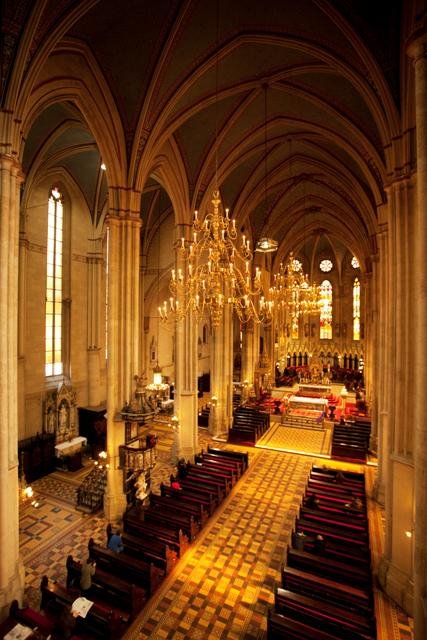
Photo by Marko Vrdoljak, TZGZ Archives
The Alojzije Stepinac Museum
Alojzije Stepinac was Archbishop of Zagreb between 1934 and 1946. He presided over the Catholic Church in Croatia both during the time the country was governed by a Nazi puppet regime and was taken over by atheist communist authorities. He is known to have openly deplored the persecution of Jews, Roma and Orthodox Serbs by the fascist government of Ante Pavelić, and is credited by Zagreb’s Jewish community with saving hundreds of Jewish lives at that time. He stood fast against the attempt by Tito’s communist government to detach the Croatian Church from Rome, and paid with his freedom and his life. The fact that he never attempted to seek exile, preferring to meet his fate and fight for the values he believed in within the borders of his home country leads him to be revered as both a religious figure and a national hero. Cardinal Stepinac was beatified by Pope John Paul II on his visit to Marija Bistrica on 3 October 1998. The Museum was opened in November 2007 in the Nebojan tower on Kaptol, close to the Cathedral. The collection depicts the life of the Cardinal, with personal artefacts, documentation and portraits. A memorial room is also open to visitors at Stepinac’s birthplace in the hamlet of Krašić, near Zagreb.
.


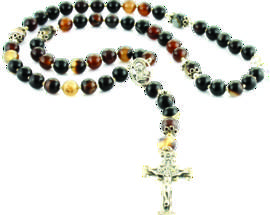
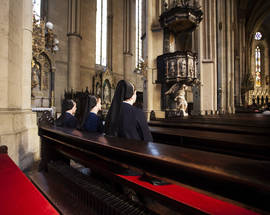
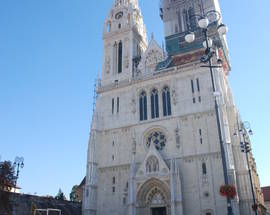
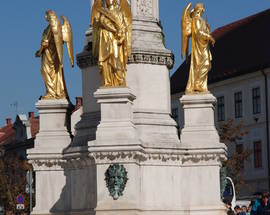
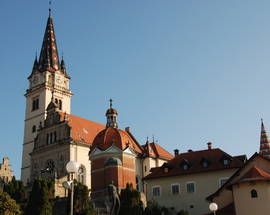
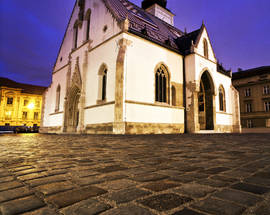



Comments